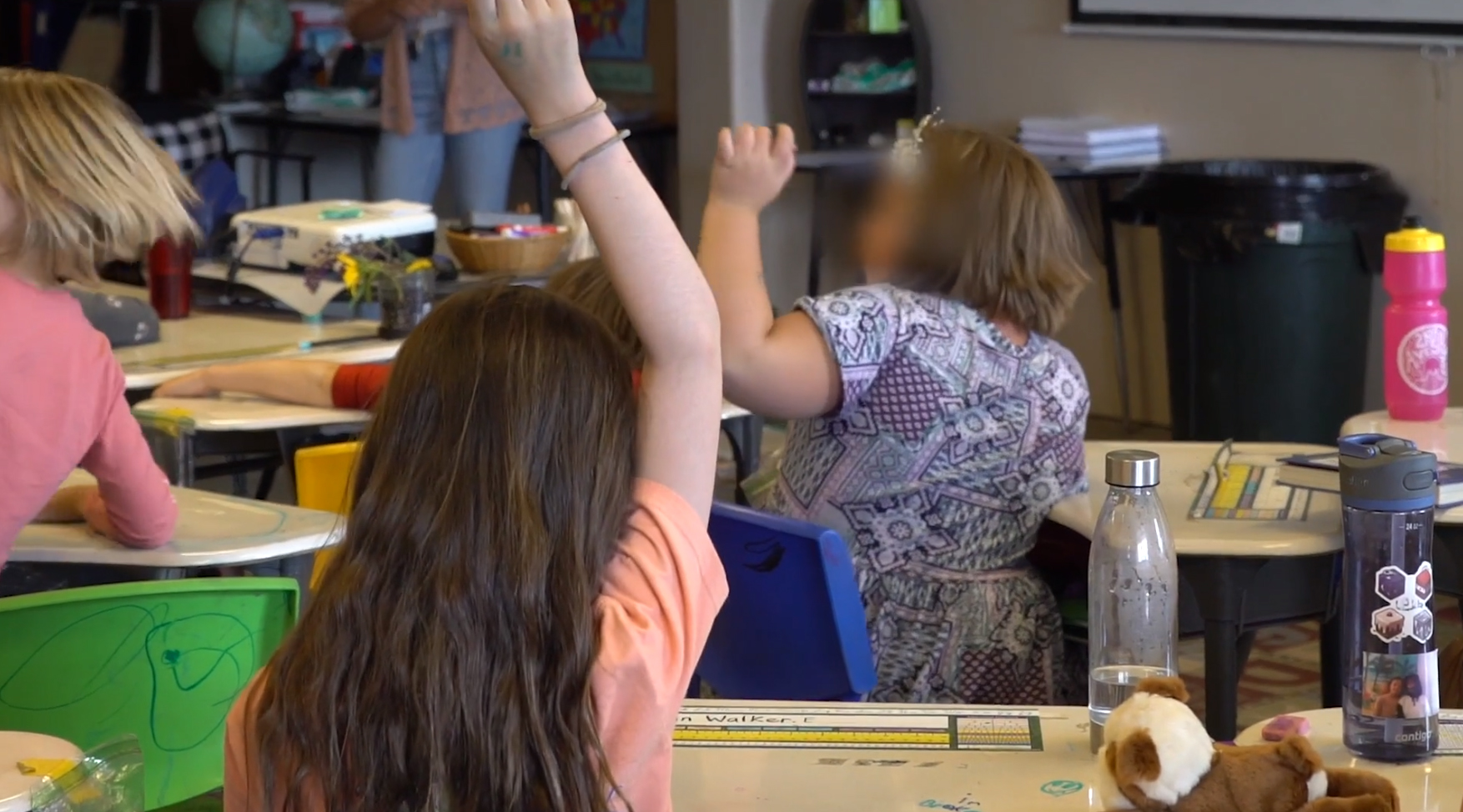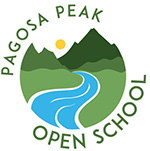“We used rubrics to communicate to both the students and families what our expectations were and how they could meet those expectations as well as go above and beyond. That's really helped them to guide their learning, be able to assess their learning and look at how the teacher is assessing their learning."
—Angela Crossland, School Director
Adding Focus to Student Cognitive Lift in Math
This Pagosa Springs-based charter school serves one class each in grades K-8. Katy Corbett, who serves as a member of the four-person team heading up the RISE grant, is the school’s Exceptional Student Services Coordinator. She explains that though the school experienced high staff turnover the past year, it has provided an opportunity to start fresh with all team members on the same page.
For Pagosa Peak Open School (PPOS), that page is a focus on cognitive lift in mathematics. Baseline data showed that both strategic thinking and extended reasoning were absent from student results and NWEA math scores were low. Moreover, staff overwhelmingly did not support the math curriculum that the school was using. Although behavioral and emotional issues in students were not prevalent, when it was indicated, it was related to lack of appropriate challenge for the student, resulting in boredom and lack of participation.
As a result of these findings, the school set two goals. First, they wanted to implement the Illustrative Math curriculum and increase cognitive lift in math by 80% for grades 3-8. Second, in subsequent years, they hope teachers will implement the cognitive strategies learned through this new curriculum and related professional development and apply them to other content areas.
According to Katy, they chose Illustrative Math because of its rankings within edreports.gov. “For focus and coherence, rigor and mathematical practices, usability, all of those scores were the highest that any curriculum could possibly get,” she said. As a project based learning school, Illustrative Math also aligns with the open-ended questions, cooperative learning, teacher as a guide and workshop-style that is prevalent in their classrooms.
To measure their success, PPOS utilized the Student Engagement Observation Tool at least three times per year as well as the Cooperative Learning Observation Tool and teacher and student surveys. In addition, the NWEA growth data will help them understand exactly how their students are growing.
To support teachers, the school is offering professional development opportunities for both Illustrative Math and general cognitive lift strategies. Implementing coaching cycles will provide in-classroom co-teaching and observation opportunities as well as co-planning. In addition, monthly meetings with all general teachers provide an opportunity for feedback, support and identification of those students who need intervention. “We started that last year,” says Katy, “and we found it super successful with the teachers for helping them see where they need a building up of how they are presenting information in class.”
For students who need extra support, WIN time is utilized every day in every class to provide students the help they need while also incorporating some of the desired cognitive lift. One month into the new curriculum, some teachers struggled to adapt the quick pace and ratio of questions to work. “There are a lot of questions,” admits Katy, “but the questions are usually pretty in-depth and the kids do work through them.”
Despite this challenge, the curriculum is proving more accessible for diverse learners. Says Katy, “I’m having my special ed kids do the same work as the other kids because it’s not so print-based. We were doing arrays yesterday and my little girl who has a hard time counting one-by-one was able to make arrays in four different ways because of the way that we’re presenting the information through the curriculum. . … It's really exciting to me because my kids have much better access to math class because of it.”
For one teacher who started implementing the new curriculum last May for school through June, the majority of her students moved from red to orange on the NWEA scale. “We see this as a huge success. It’s really exciting that we can possibly turn things around that quickly,” shares Katy.
The team is hoping that these early results will motivate those teachers who are struggling to adapt. For teachers who are facing burnout after two years of COVID, implementing a new program can feel like just another thing they have to do. Angela Crossland, School Director, explains that she remained focused on ensuring that all of the staff understood the purpose behind the new tool. Communication with parents and students was also key.
“We used rubrics to communicate to both the students and families what our expectations were and how they could meet those expectations as well as go above and beyond,” explains Angela. “That's really helped them to guide their learning, be able to assess their learning and look at how the teacher is assessing their learning. It’s been a great tool for us to show that they're not only increasing that cognitive lift, but also where they're doing it and how they're doing it.”
PPOS plans to continue the implementation into the next school year, using the tools the cohort has provided for setting and measuring goals. “I love the structure that the cohort has provided for us to be able to look at really structuring our leadership team conversations and implementation plan,” says Angela. “We really, really like the different observation tools and the student survey, so we will continue to use those to set goals for ourselves and assess where we're at in those areas. Most data that we have is related to academic performance and this really helped us capture, the behavioral engagement, the emotional engagement and the cognitive engagement.”
Going into the next year, Angela anticipates they will tweak the surveys and the data that they collect as a restorative practices school to see what kind of information they’re getting directly related to restorative practices. Looking at the observation tool, they plan to further define their tier one expectations of the teachers. In the meantime, the “light bulb” moments she is seeing with students keeps her motivated. “The peer-to-peer conversations and the ability to grapple with some stuff before hearing from the teacher has been very powerful for us,” says Angela.
So, she says, has the cohort. “I'm really enjoying the ability for some accountability outside of our school. Often, as the only charter school in our community, we feel a little bit isolated, so to have a group of charter leaders to discuss with, to have the League to reach out to for support through all of this has been amazing,” she shares. “We are able to ask ‘where are we in that implementation plan?’ ‘Have we met these deadlines?’ That's been really helpful in a year that's pretty chaotic.”


